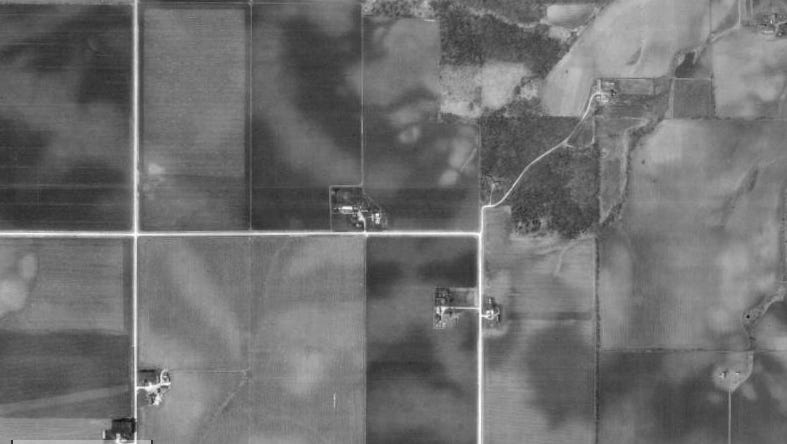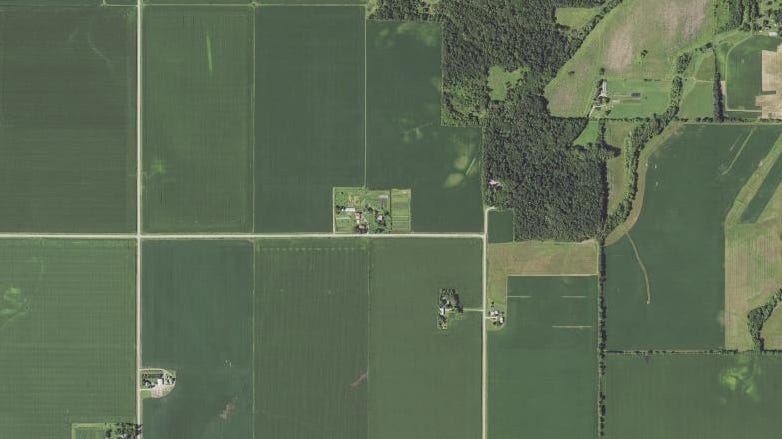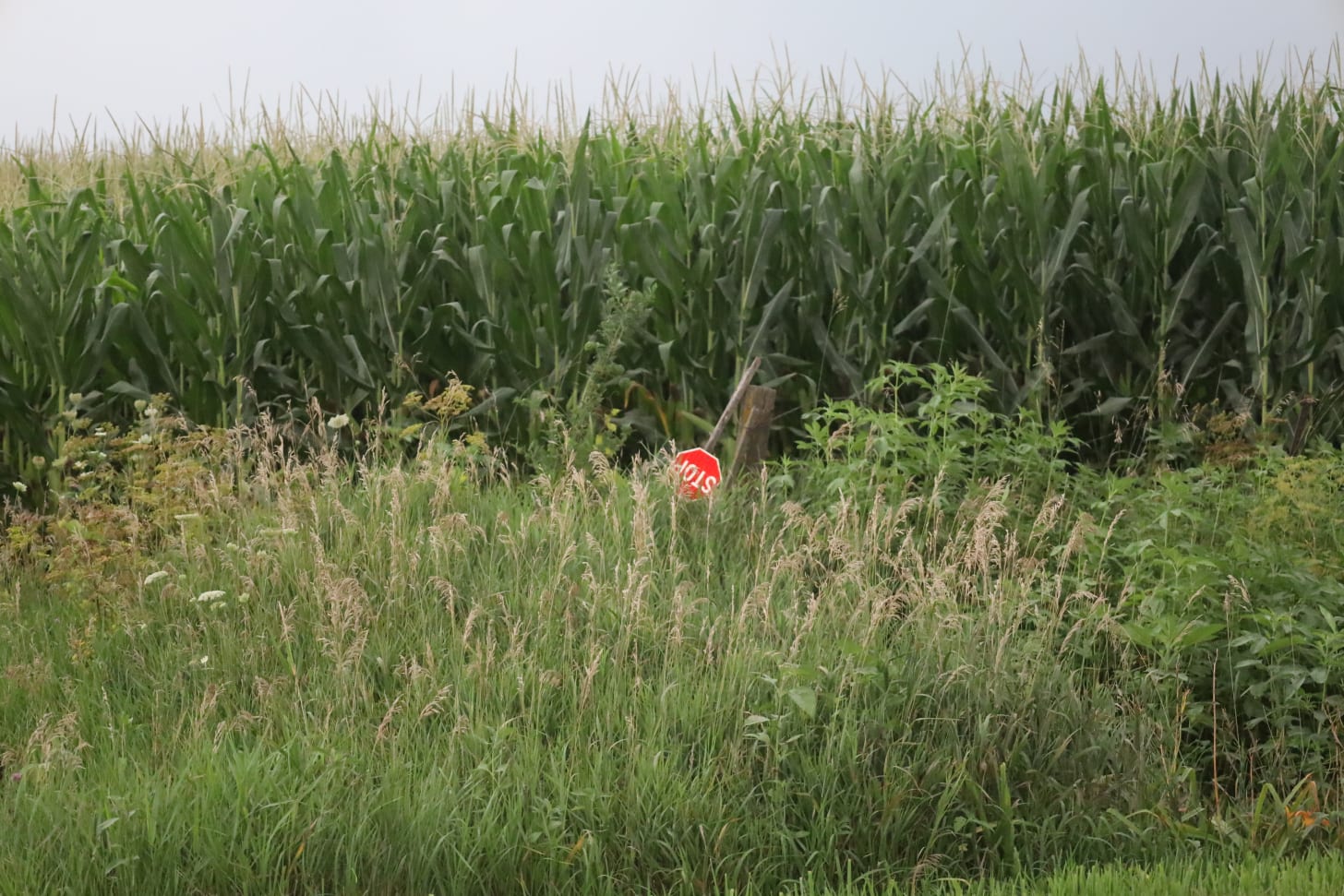I've been involved in more conversations over the past few years regarding how we could change what we do with Iowa's land than I have had most of the rest of my lifetime. This is probably partly a function of my job with Pesticide Action Network, but it also has plenty to do with my own involvement in small-scale, diversified farming since 2004.
Well, that's what I tell myself. Other folks might see it differently.
I have a dream in my head about what Iowa could become if we all put our minds to it. But, it isn't going to happen unless we really want it. When I’ve tried to talk about it with some people, I often get this question: "Oh, do you want it to be the way it was in the 1930s or 1950s?"
My answer to that question was, and still is, "yes and no."
I have to admit that I honestly don’t believe everything was better in 1930 or 1950 than it is now, just as I am quite certain not everything is better now than it was then. After all, this isn’t really an either/or question. Instead this is about trying to identify what we really would like to see in this state. There might be some things about the current day I prefer and some things about 1930 I like. While we’re at it, there are things from other decades we could throw into the mix.
Wouldn’t it be wonderful to capture some of the essence of the Land Between Two Rivers before the land was “settled” and let it back in?
I thought it might give us all a common frame of reference if I selected a case study and bundled us all into a time travel machine. And, since I am pretty familiar with the territory, I thought we could look at the area around the Genuine Faux Farm starting in 1930.
GFF in 1930
The Iowa Department of Natural Resources has a wonderful website where you can look at composite aerial photos of the state from several dates in history. You can access the maps by scrolling down towards the bottom of the text on the page and take their link to the map. It takes time to get used to the tools there, but it is worth the effort.
I grabbed some screenshots of the area surrounding our farm from history and the first from 1930 is shown above. Our farm is located where the red dot is in the photo.
Things are a few things I want you to take note of:
Check out the number of different fields. It truly looks bit like a patchwork quilt.
Take note of the various farmsteads in the photo as well.
Notice the darker areas where trees are located.
See if you can identify waterways.
I can tell you immediately that the farmstead at top left and bottom right are gone today. But, let’s just roll through the history so you can see it.
GFF in 1950
Here is a similar area in 1950 and you can already notice a number of changes.
Field sizes have gotten a bit bigger. But the biggest difference I see here is that the areas around farmsteads are beginning to get incorporated into row crop production. The farmstead at top left has given up the area to its south for a crop of some kind. The trees in this section are fairly similar, though there are fewer in the eastern portion.
GFF in 1960
Ten years later, there are a few more changes. Field sizes are fairly similar to 1950. There does appear to some establishment of grassy waterways in a couple of fields, but that may simply be an accentuation of straighter edges on the waterways. The trees in the center east portion appear to be confined now to a fenceline and that area appears to be tilled now. It is interesting to notice the pale cast of the soil in that newly tilled area - probably indicating to us that this is not the highest quality soil for row crops.
GFF in 1970
When we get to 1970, we much more field consolidation. The farmstead at top left is being tilled to its very edges. An area north of our farm that was pasture and had a couple of trees is now tilled. If we watch that area in later images we may also see a paler cast to that soil too. There are fewer trees around all of the farmsteads.
GFF in 1990
By 1990, there isn’t much left of the idea that smaller fields and longer rotations are a good idea. The farmstead at the top left is now completely tilled over and the farmstead at the bottom right is nearly completely gone.
GFF in 2019
Here is a relatively recent representation. Comparisons can be difficult since these images are not all taken at the same time of year. And, of course, this one is in color, while the others are black and white.
The trends of large, consolidated fields has not changed. Most farmsteads continue to find the field edges creeping closer and closer. Two farms are now missing entirely, but you can see some of the footprint in the fields where they once were.
On the positive side, there are a few grassy waterways being managed. One farmstead has more, rather than less area surrounding it that is not part of a larger field - and that would be the Genuine Faux Farm. And, happily, a field east of us has been dedicated to a pollinator planting.
These pictures span ninety years, so we probably should expect to see some changes.
One thing that stands out to me is that these images show us that the soil has different qualities. Often the land will tell us what it wants to be, and it rarely follows the artificial borders we humans like to put up. And sadly, we are often deaf and blind to what the land is telling us and showing us.
So, what would I like?
Okay. First, let’s make one thing clear. One relatively short blog isn’t going to allow me to say everything I want to say on the topic - especially since I spent most of my time taking you on a trip through time. And second, this is a big question that deserves more than one throwaway answer. It needs deep thought with real intention for action - by myself and many other people.
I would certainly agree that we would live better on our landscape and have healthier farms and people on those farms if we supported more diverse cropping systems. This could manifest itself in more field borders OR strips of different crops in our larger fields. I also believe that those who live on farmsteads should create the opportunity to have more untilled land around them. We should not have to feel like every square inch of land must pay off in dollars and cents.
So, in some ways, I would like to see some movement back to 1930 (or even 1970). We need small grain crops and hayfields and pasture land and orchards. We need diverse farms that have a mix of crops, woodlots and animals.
But, we need to do better than just go back to our past land use habits. We need trees, bushes and grasses in the fence rows and we need habitat plantings that double as snow drift catchers by the roadsides. And we need wild spaces.
We need to stop thinking in terms of squares and rectangles and start thinking in terms of the contours and features of the land.
We need to re-establish some of the "pothole" ponds that we spent so much time draining prior to 1930. And we need to allow our creeks and rivers to meander and have sloughs and wide spots. This would create more space for wildlife and more opportunities to catch heavy rains and allow it to seep into a our groundwater supplies rather than running downstream to the Gulf of Mexico - carrying our precious topsoil with it.
We need buffer strips that can double as turn-around areas and access lanes for equipment, while also providing some natural habitat. These could serve as a preventative against wind erosion and a potential catch for unintended pesticide drift.
So, yes, I want some of what the 1930s and the 1950s had.
But, I want more, too.
When someone mentions to me that it would be nice if we returned to how we farmed in the 1930s, I remind them of when the Dustbowl occurred. Just because it was a time in the past, it doesn't mean it was a time that we, as humans, did a particularly good job with how we farmed and dealt with nature.
Perhaps, I am odd and maybe you don't agree with me. But, I hope you will at least consider the potential.
I have a vision of what this state could look like. It has a mixture of corn fields and oak savannas. There are prairie segments and soybeans and oats and butternut squash. Fields are broken into odd shapes in deference to what the land tells us. Cows dot the landscape in a rolling pasture area and a small wooded lots surround restored ponds.
A small field of sunflowers isn't far from alfalfa that just had its second cutting and a wild area supports pheasants, meadowlarks and even provides foragers with an opportunity for different types of foods - in fact, it is rumored there are morel mushrooms there. Every community has more than one farmer who raised produce and sells eggs. Native communities are given the power to steward ancestral lands and honor the natural food ways of their people. Streams run clear and the wetlands host the great migrations in the fall and spring.
Iowa has the bones on which a diverse and healthy landscape can grow. And, it's beautiful.











Excellent! 👍👍👍